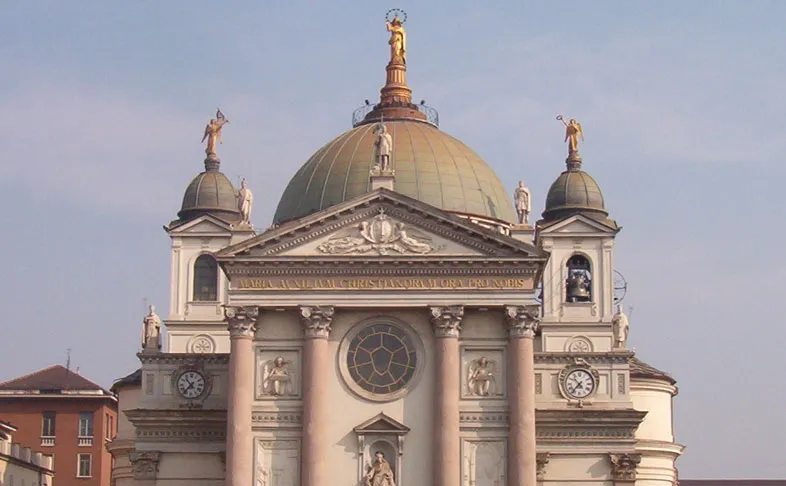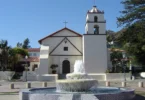Introduction
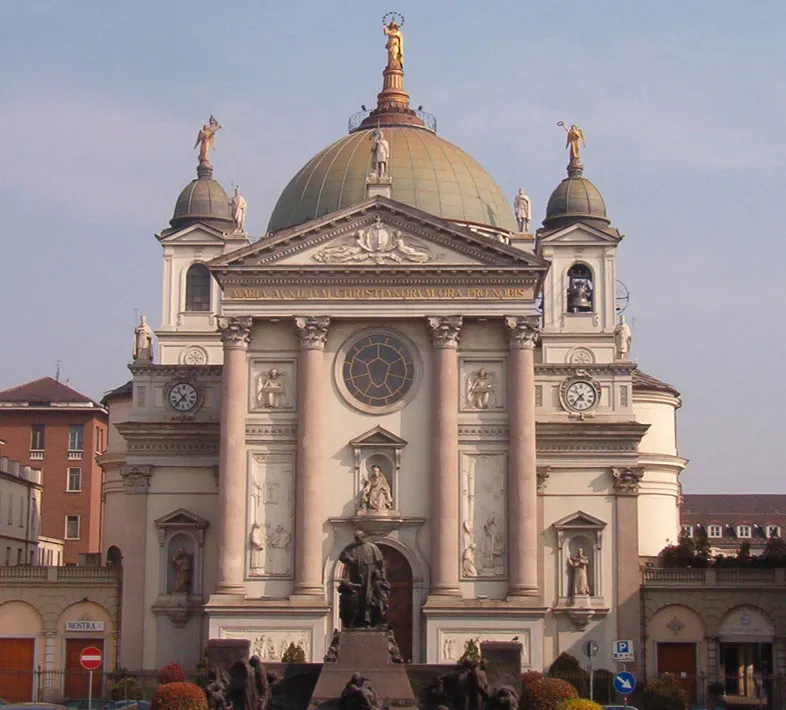
The Basilica of Our Lady Help of Christians (Italian: Basilica di Santa Maria Ausiliatrice) is a church in Turin, northern Italy. Originally part of the home for poor boys founded by John Bosco, it now contains the remains of Don Bosco, and 6,000 relics of other saints.
The Marian feast was celebrated by the order of Servites since the 17th century. The veneration to Mary became popular under this title in Rome especially, where the feast was especially promulgated by Saint John Bosco and Saint Vincenzo Palotti .St. John Bosco was an ardent promoter of devotion to “Our Lady Help of Christians”. He even built a huge Basilica in her honour in 1868 and founded a religious Congregation for women, under the title of, “The Daughters of Mary, Help of Christians”.
Vatican II, in the Constitution on the Church, cites this title of Mary, placing it in the context of Mary’s maternal role. “In an utterly singular way she co-operated by her obedience, faith, hope and burning charity in the Saviour’s work of restoring supernatural life to souls. For this reason she is a mother to us in the order of grace…By her maternal charity, Mary cares for the brethren of her Son who still wander through this world in the midst of dangers and difficulties until they are led to the happiness of their heavenly home”.
The Church has traditionally focused on two aspects of Our Lady’s help on the feast day of Our Lady Help of Christians. Firstly, the Church focuses in this feast upon the role of Our Lady’s intercession in the fight against sin in the life of a believer. Secondly, the Church has focused upon Our Lady as one who assists Christians as a community, through her intercession, in fighting against anti-Christian forces.
It has attained special renown since Don Bosco, founder of the Salesian Congregation, dedicated his foundation to Our Lady Help of Christians the mother church of his congregation at Turin on June 9, 1868. The Salesians have carried the devotion to their numerous establishments.
It was established due to the great appreciation of Saint Don Bosco for this Marian title and the development of the Salesian works in many countries since the second half of the 19th century. Although it is commonly associated with the Roman Catholic Church, the Orthodox Church has also known the devotion since 1030 in Ukraine, when the country was defended from a barbarian invasion.
The Salesian National Shrine of Our Lady Help of Christians is located in Stony Point, New York.
The Abbey of Mary Help of Christians, better known as Belmont Abbey, is a small American monastery of Benedictine monks in the town of Belmont, Gaston County, North Carolina, outside of Charlotte, North Carolina. The minor basilica of Our Lady Help of Christians is listed on the National Registry of Historic Places.
There is a chapel of Our Lady Help of Christians at the Basilica of the Immaculate Conception in Washington D.C.
Under this title, the Virgin Mary is venerated by many Chinese Catholics, particularly at the Shrine of our Lady of Sheshan. In May 2007, Pope Benedict XVI designated her May 24 feast for the Roman Catholics in China, who face persecution and restriction from the Chinese Patriotic Catholic Association.
History of Basilica of Our Lady Help of Christians, Turin

Giovanni Bosco commissioned the construction of the Basilica of Our Lady Help of Christians in order to coordinate all activities related to the Salesians in the Valdocco suburb. The church was designed by Antonio Spezia, who drew inspiration from the facade of San Giorgio Maggiore in Venice. It was built in 1865-1868 by Carlo Buzzetti (one of the first boys of the Oratory). The first stone was laid on 27 April 1865, in the presence of Prince Amedeo di Savoia. The church was consecrated in 1868.
The basilica enshrines an image of the Blessed Virgin Mary under the title Mary Help of Christians. Pope Leo XIII granted a Canonical coronation to the painted image on 13 February 1903. The actual ceremony was carried out on 17 May 1903 via his Papal legate, Cardinal Agostino Richelmy.
According to legend, a vision of the Virgin Mary appeared in a dream to John Bosco in 1844 or 1845 and revealed the site of the martyrdom of the Turinese saints Solutor, Adventor and Octavius. The Basilica dell’Ausiliatrice was built on the site of their death. The church houses the relics of these saints.
The basilica holds the tombs of saints Don Bosco, Maria Domenica Mazzarello, and Dominic Savio. The vast and magnificent basilica of Our Lady in Turin, Italy, built by Saint John Bosco between 1863 and 1868, was inspired by a dream-vision which he had in October 1844. The Blessed Virgin showed Don Bosco a vast and lofty church and said:
“This is my house; from it my glory shines forth. You will understand everything when, with your material eyes, you will see in actual fact what you now see with the eyes of your mind.”
Nineteen years later, Don Bosco finally set to work on the basilica of Our Lady Help of Christians. Our Lady, in a second vision, chose the location as that of the place of the martyrdom of Saint Adventer Solutor and Saint Octavious, who were both soldiers under the Emperor Maximianus in the fourth century.
When the foundation of the church was laid, Don Bosco went to the contractor, Charles Buzzetti, and told him: “I want to pay you at once for this fine work. I don’t know if it will be much, but this is all I have.” He then took out his little purse and emptied the contents into the hand of the contractor, who was expecting a handful of gold coins. His jaw dropped in dismay when he saw in his hand only eight pennies.
In Don Bosco’s Marian evolution, after Our Lady Consolata and Immacolata, we come to devotion to Mary Help of Christians.
The idea of building a majestic church in honor of Maria Santissima stems from the apparent need to accommodate a greater number of faithful. But it is not only historical contingencies that determined Don Bosco’s choice. He feels the title chosen as the most suitable to express his gratitude to the Virgin for the many “help” received and, at the same time, to invoke her protection on the nascent Congregation.
There is also in Don Bosco a strong pastoral and pedagogical emphasis: Mary is a help in the journey of life to overcome the assaults of sin, to be freed from all forms of evil (spiritual, moral and physical) and above all to bring about good. Don Bosco, even without a minimal economic base, is convinced that “it is Our Lady who wants the Church; she will think about paying ».
The Shrine built by Don Bosco, with a Latin cross shape, was very sober and bare, without marble and decorations on the walls. The single dome was also whitewashed.
The architect Spezia was inspired by the facade of San Giorgio Maggiore in Venice designed by Palladio.Inside the Basilica, today we find: the major altar, the picture of the Help of Christians, the major and minor domes, the two side chapels of the presbytery , the stands on the side chapels, the gallery behind the high altar, the sacristy and the Statue of the Help of Christians.
Architecture of Basilica of Our Lady Help of Christians, Turin

- Burials: Michael Rua, Dominic Savio, Maria Domenica Mazzarello
- Architectural Style: Neoclassical Architecture
- Architect: Antonio Spezia
“Don’t be alarmed,” Don Bosco quickly added with a smile, “the Madonna will see to the payment of her church. I am just the instrument, the cashier.” And to those standing by he concluded, “You will see!”
“The whole church was put up by means of graces granted by Mary,” Don Bosco often said. One sixth of the cost, about one million lire in those days, was borne by the generous contributors, devout persons; the rest came from the small offering of those who had been aided by Mary either in health, in business, in family matters, or in some other way.
“Every stone, every ornament, represents one of her graces,” insisted Don Bosco. The original contractor, who received the eight cents, later testified that, “The Church was paid for to the last cent.”
Among the monuments of the Church, the most splendid is the painting above the main altar. Our Blessed Lady Help of Christians occupies the central position, and is surrounded by symbols: God the Father, the Holy Spirit, the Apostles and Evangelists. It measures more than 33 yards square, and is bordered with gold.
There was much opposition to the project of building a church dedicated to and in honor of Our Lady Help of Christians, but Don Bosco insisted. It appears he had a supernatural knowledge that the future of his own congregation, and that of the whole world in the not too distant future, depended on the powerful protection of Mary, Help of Christians, just as it had needed and obtained that protection at Lepanto on October 7, 1571, and at Vienna, on September 12, 1683.
Don Bosco won out, and the vast church was consecrated and dedicated on June 9, 1868. The dedication festivities lasted nine days, and on each day a Bishop preached while another took part in the religious ceremonies.
By the turn of the nineteenth century the Church of Our Lady Help of Christians in Turin had become famous, and in 1911, Pope Saint Pius X gave it the crowning glory by raising it to the rank of a Basilica – The Basilica of Our Lady Help of Christians!
The Great Picture of the Basilica
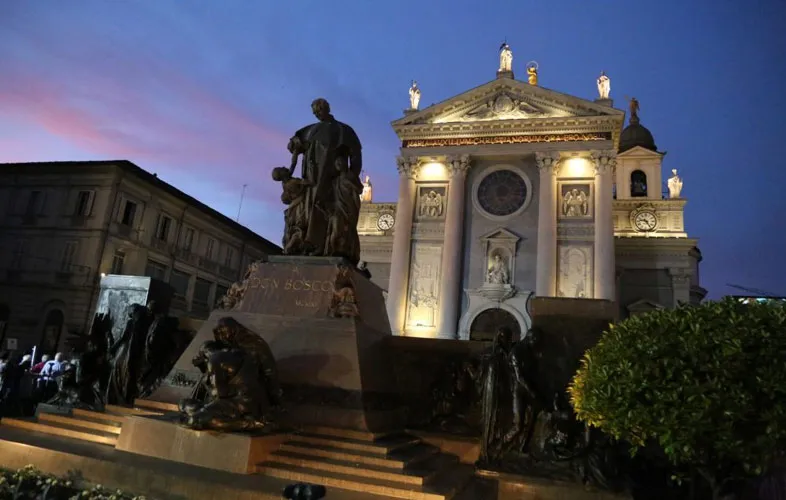
The picture was conceived by Don Bosco who spoke of it to the painter Lorenzone as of a spectacle he had already seen: the painter pointed out that, to paint such a picture, it would take a square and, to contain it, a church as large as Piazza Castello.
Don Bosco resigned himself to seeing his project reduced. He thus described it: “The Virgin stands out in a sea of light and majesty. And she is surrounded by a host of Angels, who pay homage to her as their Queen. With her right hand she holds the scepter which is a symbol of her power, with her left hand she holds the Child who has open arms, thus offering her graces and her mercy to those who have recourse to her august Mother her.
And she is surrounded by a host of Angels, who pay homage to her as their Queen. With her right hand she holds the scepter which is a symbol of her power, with her left hand she holds the Child who has open arms, thus offering his graces and his mercy to those who have recourse to her august Parent.
With the right he holds the scepter which is a symbol of his power, with the left he holds the Child who has his arms open, thus offering his graces and his mercy to those who have recourse to his august Mother. Around and below are the holy Apostles and the Evangelists. They are carried away by sweet ecstasy, almost exclaiming: Regina Apostolorum, ora pro nobis, they gaze in amazement at the Holy Virgin.
At the bottom of the painting is the city of Turin, with the Valdocco sanctuary in the foreground and Superga in the background. What has the greatest value in the picture is the religious idea, which generates a pious impression on those who gaze at it”.
According to the description made by Don Bosco, the picture is an effective representation of the title “Mary, Mother of the Church”. It is a great page of Marian catechesis. Mary, as Mother of the Son of God, is the Queen of heaven and earth: the whole Church, represented by the Apostles and the Saints, acclaims her as a powerful Mother and Help of Christians.
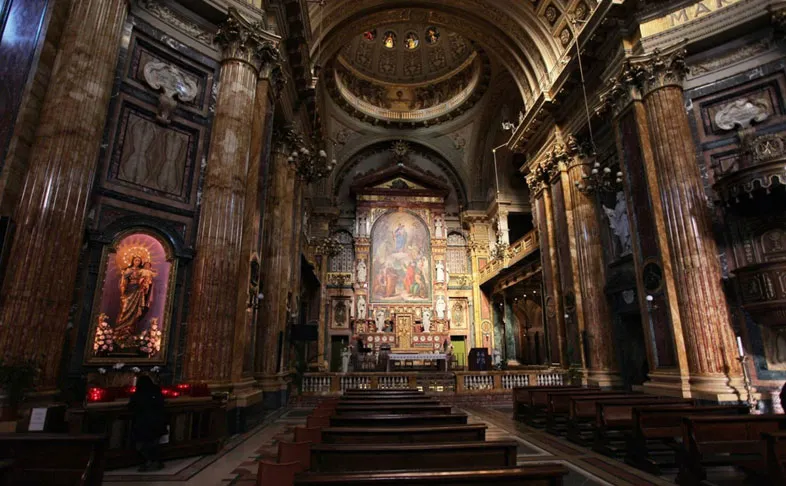
Altar of San Giovanni Bosco
It is one of the points of greatest attraction of the Basilica of Mary Help of Christians. In fact, there are always numerous pilgrims or simple faithful who pause in reflection or in silent prayer in front of Don Bosco’s casket. They are often parents who recommend their children, small or large, to the great Saint of youth. They are also past pupils and past pupils, young and old who pray to him, or even boys and girls, pilgrims or visitors to the Shrine, who recommend their present and future to their patron saint.
Don Bosco himself is remembered in the church he built in honor of Mary Help of Christians, with an altar, the work of the architect Mario Ceradini. It is a true monument, due to the artistic grandeur of the lines and the harmony of the marbles. The balustrade and the steps of the altar are in yellow Siena marble. On the sides two statues of the Nori hold a chalice with the host, the other a flaming heart, symbols of faith and charity. The bronze urn contains the body of Don Bosco. The vestments that cover the saint were donated by Pope Benedict XV.
Our Lady Help of Christians
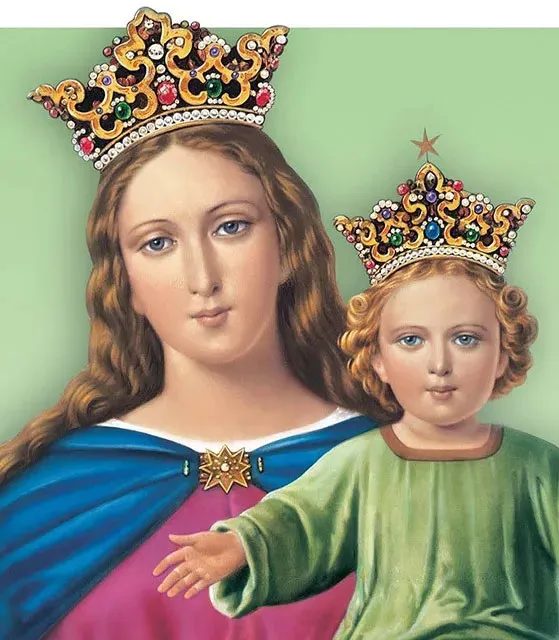
Our Lady Help of Christians (Latin: Sancta Maria Auxilium Christianorum; Spanish: Nuestra Señora María Auxiliadora; Filipino: Maria, Mapag-ampon sa mga Kristiyano), is a Roman Catholic Marian devotion with a feast day celebrated on May 24. Saint John Chrysostom was the first person to use this Marian title in year 345 as a devotion to the Virgin Mary. Don Bosco also propagated Marian devotion under this title.
The title of Our Lady Help of Christians is associated with the defense of Christian Europe (Latin and Greek), the north of Africa and the Middle East from non-Christian peoples during the Middle Age. In 1572, the Islamic Ottoman Empire intended to invade Christian Europe. Pope Pius V called Christian armies from all over Europe to defend the continent and asked the believers to pray to Mary in order. The defeat of the Muslim Turks was attributed to the intercession of Mary under this title.
Pope Leo XIII granted a Canonical coronation towards the Marian image bearing the same title on 17 May 1903, now presently enshrined within the Basilica of Mary Help of Christians. Pope Benedict XVI during his Regina Caeli papal address on 24 May 2009 invoked this Marian patronage, under the venerated title of Our Mother of Sheshan, calling for Chinese Catholics to renew their fidelity to the Pope as the sole successor of St Peter.
Around 1576, Bernardino Cirillo, archpriest of Loreto, published at Macerata two litanies of the Blessed Virgin, which, he contended, were used at Loreto. One is in a form which is entirely different from our present text. Another form (“Aliae litaniae B.M.V.”) is identical to the litany of Loreto approved by Pope Clement VIII in 1601 and now used throughout the entire Church. This second form contains the invocation Auxilium Christianorum.
Possibly warriors returning from the Battle of Lepanto (October 7, 1571) visited the sanctuary of Loreto, and saluted the Holy Virgin there for the first time with this new title. It is more probable, however, that it is only a variation of the older invocation Advocata Christianorum, found in a litany of 1524.
Torsellini (1597) and the Roman Breviary (May 24, Appendix) say that Pope Pius V inserted the invocation in the litany of Loreto after the battle of Lepanto. But the form of the litany in which it is first found was unknown at Rome at the time of Pius V.
The feast of Our Lady Help of Christians was instituted by Pope Pius VII. By order of Napoleon I of France, Pius VII was arrested on June 5, 1808, and detained a prisoner first at Grenoble, and then at Fontainebleau. In January 1814, after the battle of Leipzig, he was brought back to Savona and set free on March 17, on the eve of the feast of Our Lady of Mercy, the Patroness of Savona. The journey to Rome was a veritable triumphal march.
The pontiff, attributing the victory of the Church after so much agony and distress to the Blessed Virgin, visited many of her sanctuaries on the way and crowned her images (e.g., the “Madonna del Monte” at Cesena, “della Misericordia” at Treja, “della Colonne” and “della Tempestà” at Tolentino). The people crowded the streets to catch a glimpse of the venerable pontiff who had so bravely withstood the threats of Napoleon. He entered Rome on May 24, 1814, and was enthusiastically welcomed.
To commemorate his own sufferings and those of the Church during his exile Pope Pius VII extended the feast of the Seven Dolours of Mary to the universal Church on September 18, 1814.
When Napoleon left Elba and returned to Paris, Murat was about to march through the Papal States from Naples; Pius VII fled to Savona 22 March 1815.After the Congress of Vienna and the battle of Waterloo, the Pope returned to Rome on July 7, 1815. To gave thanks to God and Our Lady, on 15 September 1815 he declared 24 May, the anniversary of his first return, to be henceforth the feast of Our Lady Help of Christians.
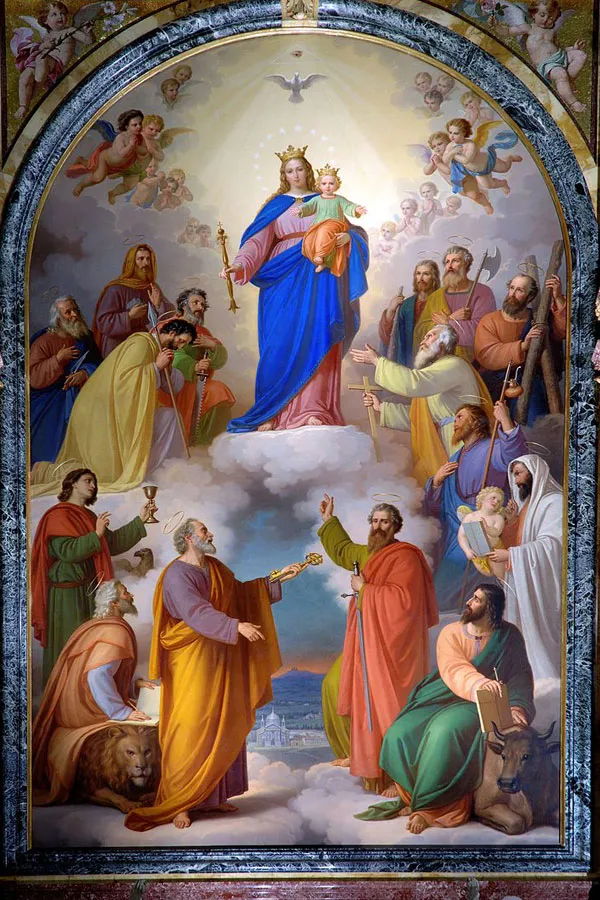
The Basilica of Our Lady Help of Christians in Turin houses the tombs of three major Saints
Tomb of Saint John Bosco
John Bosco founded the Salesian Congregation at Turin in 1864 on the basis of the evangelizing principles of Saint Francis de Sales and his followers, who were were called the Salesians.
Born in 1815, he lived at a time when many families left their farms in hopes of a better life in the cities, only to find out that work conditions were terrible and life expectancy short. Often children were either orphaned or abandoned and left to roam the streets, stealing and otherwise causing harm not only to others but more importantly to their own souls. Don Bosco, son of a single mother, sympathized with these children and tried his best to help them. And, in fact, his mother “Mama Margherita Occhiena” would herself be declared venerable by the Church in 2006.
Despite opposition from secular and religious authorities, he persevered and in a few years time, his tireless activity created a network of homes, colleges, lodging-houses, schools, laboratories and recreation homes in Italy and abroad, that have acquired world renown. The reason for the success reached by the Apostle of Youth mainly lies in the fact that Don Bosco wanted his oratories or recreational centers to prepare good Christians and citizens.
He later added the Institute of the Daughters of Mary Our Lady Help of Christians to the male congregation.
Don Bosco was beatified July 24, 1907 by Pope Pius X and canonized June 2, 1929 by Pope Pius XI. He is known as the patron saint of apprentices, boys, editors, Mexican young people, laborers, schoolchildren, and young people.
His body, partially incorrupt but covered in wax, is kept in a glass reliquary here in Turin at the Basilica of Maria Ausiliatrice.
His home has now been turned in to a museum….you can find the website here (in Italian only at this time). You can see his room, where he died on January 31, 1888.
His Feast Day is January 31.
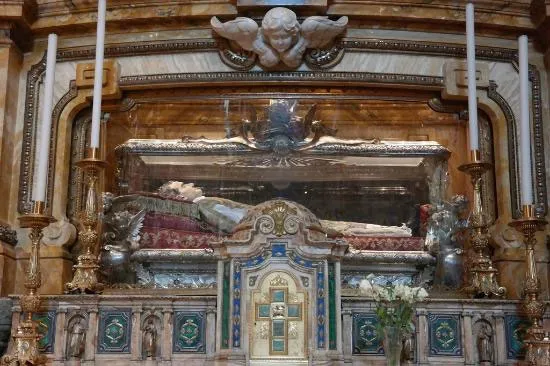
Tomb of Saint Mary Mazzarello
Saint John Bosco chose Mary Mazzarello to found the Institute of the Daughters of Mary Help of Christians in 1872. She died at Nizza Monferrato on 14th May 1881.
Her body is also venerated in the Basilica of Mary Help of Christians, near that of Saint John Bosco. She was canonized on 24th June 1951 and her feast is celebrated on 13th May.
Tomb of Saint Dominic Savio
One of our youngest saints, Dominic Savio. Born on April 2, 1842 to a devout Catholic family in the village of Riva in northern Italy, he had 9 brothers and sisters. Even as a small child, Dominic loved Our Lord and His church. For example, he refused to eat with anyone who did not say grace before every meal and was often seen kneeling before the tabernacle in church. He received his first Holy Communion at seven (the normal age at that time was twelve), became an altar server, and attended daily Mass as well as frequent confession.
Dominic studied directly under Fr. Bosco at the Oratory. He was an excellent student. He expressed his desire to become a Saint. His health began to fail him, and although everyone thought he would recover (he predicted he would not and prepared to die a happy death), he died at the age of 17.
Fr. Bosco was powerfully touched by Dominic and he wrote a biography, “The Life of Dominic Savio.” The biography quickly became popular and would eventually be read in schools across Italy.
As people learned about Dominic, they called for his canonization. Many considered him too young for Sainthood, but he was declared Venerable in 1933 by Pope Pius XI, Beatified in 1950, and then Canonized as Saint in 1954 by Pope Pius XII. Saint Dominic Savio is the patron saint of choirboys, the falsely accused, and juvenile delinquents. Many schools and institutions for boys are dedicated to him. His liturgical feast day is May 6 (originally it was March 9…the day that he died).
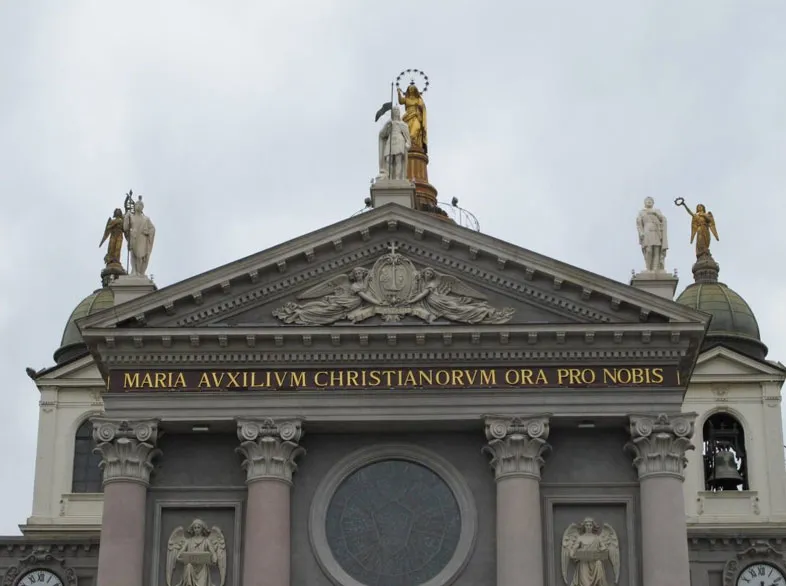
Observance
The church has traditionally focused on two aspects of Our Lady’s help on this feast day. Firstly, the church focuses in this feast on the role of Our Lady’s intercession in the fight against sin in the life of a believer. Secondly, the church focuses on Our Lady as one who assists Christians as a community, through her intercession, in fighting against anti-Christian forces.
Michael Daniel observes that, while this approach may be regarded as outdated, in light of Vatican II, where the world and non-Christians elements therein were seen in a positive rather than a hostile or threatening light, it would seem that it would be naïve on the part of Christians to regard all movements and all social trends as either good or harmless. The dioceses of Tuscany adopted it on 12 February 1816. The hymns of the Office were composed by Brandimarte.
It became the patronal feast of Australasia, a double of the first class with an octave. After the reforms of the Second Vatican Council, it was designated a solemnity to be kept on the first available Sunday on or after 24 May. The Fathers of the Foreign Missions of Paris, in accordance with a vow (1891), celebrated this feast with great splendor in their churches.
It has attained special renown since John Bosco, founder of the Salesian Congregation, dedicated his foundation to Our Lady, Help of Christians, the mother church of his congregation at Turin on 9 June 1868. The Salesians have carried the devotion to their numerous establishments. It was established due to the great appreciation of Saint Don Bosco for this Marian title and the development of the Salesian works in many countries since the second half of the 19th century.
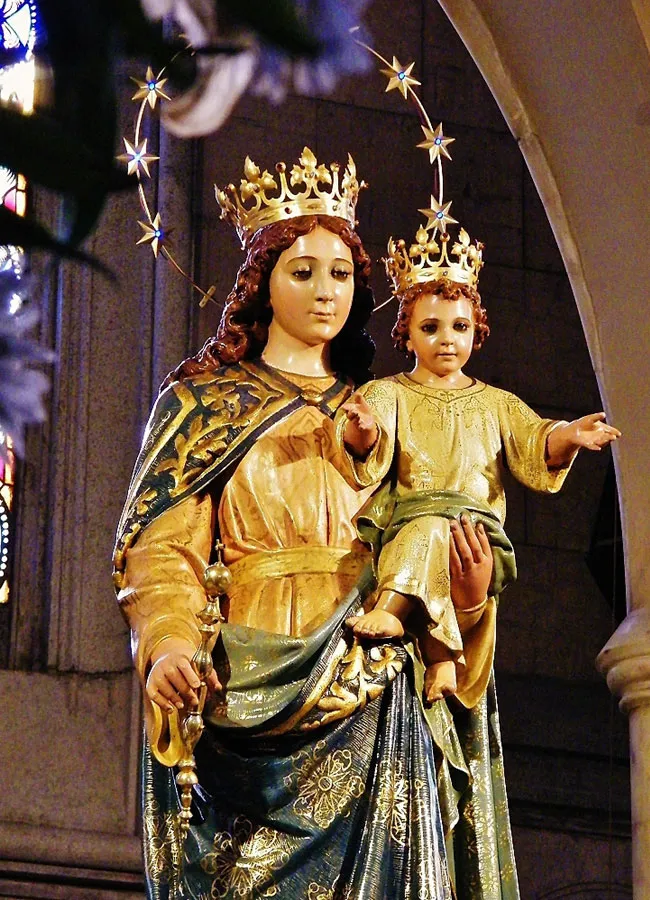
Feast Day - 24th May
Feast of Our Lady Help of Christians – Pope Pius VII, held captive by Napoleon’s forces at Savona, organized a Rosary Novena among the faithful to Our Lady Help of Christians for his liberation. In 1815, Pius VII established the feast of Our Lady Help of Christians in gratitude for his release from captivity.
In 1809, Napoleon’s men entered the Vatican, arrested Pius VII and brought him in chains to Grenoble, and eventually Fontainbleau. His imprisonment lasted five years. The Holy Father vowed to God that, if he were restored to the Roman See, he would institute a special feast in honor of Mary. Military reverses forced Napoleon to release the Pope, and on May 24th 1814, Pius VII returned in triumph to Rome. Twelve months later, the Pope decreed that the feast of Mary Help of Christians, be kept on the 24th of May.
The Marian feast has been celebrated by the order of Servites since the 17th century. The veneration to Mary became popular under this title in Rome especially, where the feast was especially promoted by John Bosco and Vincent Pallotti Bosco was an ardent promoter of devotion to “Mary, Help of Christians”. He built a huge basilica in her honour in 1868 and founded a religious congregation for women, under the title of, “The Daughters of Mary, Help of Christians”.
Interpreting the painting he had commissioned for the basilica, Bosco referred to it as depicting Mary Mother of the Church. This suggests a connection to the way in which popes have addressed Mary as both Mother and Help of the Church.[citation needed] Bosco chose this devotion because of its affinity to his devotion to the church, the bearer of Christ.
Vatican II, in the Constitution on the Church, cites this title of Mary, placing it in the context of Mary’s maternal role.
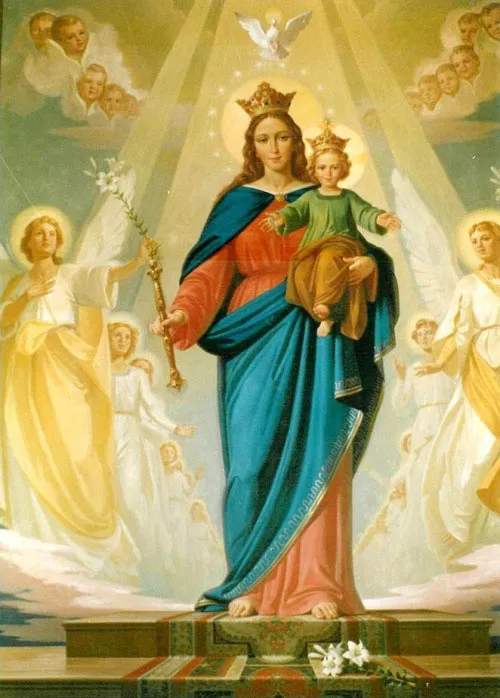
Mass Time
Monday to Firday : 7:00 am, 8:00 am, 9:00 am, 10:00 am, 5:00 pm, 6:30 pm
Saturday : 7:00 am, 8:00 am, 9:00 am, 10:00 am, 6:00 pm
Sundays : 8:00 am, 9:30 am, 11:00 am, 12:30 pm, 5:00 pm, 6:30 pm, 9:00 pm
Church Visiting Time
Monday to Firday : 6:30 am to 1:00 pm & 2:00 pm to 7:00 pm
Saturdays : 7:00 am to 7:00 pm
Sundays : 7:30 am to 10:00 pm
Contact Info
Via Maria Ausiliatrice, 32,
10152 Torino TO, Italy.
Phone No.
Tel : +39 011 52241
Accommodations
How to reach the Basilica
Turin (TRN) Airport which is 14 km away and other nearby airports to the Basilica include Milan Malpensa (MXP) (101.3 km), Milan Linate (LIN) (131.9 km), Nice (NCE) (161.4 km) and Milan Bergamo (BGY) (170.6 km).
Castello Est Cap Tram Stop at Turin, Metropolitan City of Turin, Italy is nearby to the Basilica.

